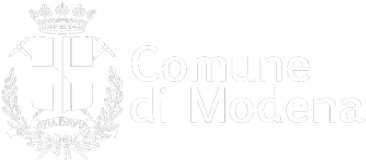The Cathedral OF MODENA
9 June 1099 was a very important date for the city of Modena. On this day, the first stone of the city’s cathedral was laid, a magnificent example of Romanesque art that amazed society at that time and still today fills us with wonder for its extraordinary beauty and originality. An account from this period, the Relatio de innovazione ecclesiae Sancti Geminiani, tells us that the choice of the architect came about by miraculous divine inspiration: Lanfranco, who created a bold new form of architecture, a model for the Romanesque art that flourished after him. Scientific investigation carried out during the recent renovation work that started in 2006 has revealed that material salvaged from the Roman Modena, Mutina, was used for the stone cladding of the building.
Lanfranco’s structure, a basilica divided into three naves by alternating columns and pillars with a raised presbytery over the crypt, was then harmonically sculpted by Wiligelmo. This sculptor and others active in the early twelfth century were responsible for the splendid decorations that cover the capitals in the loggia, the engaged columns and ledges in the underlying small arches. These architectural patterns in the form of plants and fantastic beings feature at regular intervals around the entire perimeter of the Duomo.
The main portal and most of the sculptures on the façade, whether holy or profane, heavenly or monstrous were also the product of Wiligelmo’s workshop. They summarise the entire spiritual world of medieval man, his faith, hopes, fears, certainties and doubts.After nine centuries, the touching expressiveness of Wiligelmo’s Reliefs from Genesis carved on huge stone slabs, these too recycled, however remain unparalleled.The stories of Adam and Eve, Cain and Abel and Noah’s Ark still maintain their original strong intensity, unusual emotional charge and extraordinary narrative force.
The relief work decorating the other two doors opened by Lanfranco into the Cathedral also date back to the first two decades in the twelfth century. The Porta dei Principi, (Princes’ Gate) which looks onto Piazza Grande, embraces the faithful and tells them of the history of Saint Geminianus, the patron saint of Modena, visually represented and transformed into narrative with images of a unique quality.
On the northern side, near the Ghirlandina belltower, we have the "Porta della Pescheria" (Fish-Market gate), original due to the humanity of the two sculpted Telamons who appear to be asking anyone who crosses the threshold for help in carrying their huge burden. Man and his work are also represented in the sculpted door frames, each depicting the twelve months of the year portrayed as agricultural workers busy in the fields. Fantastic tales feature on both the door's unusual archivolt, carved with the adventures of King Arthur in Bretagne, and on both door frames and the architrave where animals from ancient fables by Phaedrus and Roman de Renard emerge from intricate tangles of plant life.
Of particular note are the Metopes, sculptural reliefs on the roof projections depicting a lively group of imaginary and monstrous beings. The ones found on the Cathedral today are actually reproductions, as the originals have been moved to the “Epigraphic Museum” for conservation purposes.
Succeeded by maestros from Campione in 1170-80, these masters from the Po valley also displayed knowledge of the sculptures in Parma baptistery and were responsible for the pulpit and the rood screen inside the Cathedral, leading to the crypt entrance.
From the late twelfth century to the first half of the fourteenth, the Campionesi Masters worked on the Cathedral and the Ghirlandina belltower. These were groups of builders and sculptors from Campione on Lake Lugano, organised into real family workshops. It was the Campionesi Masters who opened the large rose window, the two lateral doors in the façade, and the magnificent Porta Regia onto "Piazza Grande", which stands out in contrast to the white wall of the cathedral due to the chromatic effects of its fine rose-coloured marble. They also built the false transept added to the original basilica layout designed by Lanfranco.
INSIDE THE CATHEDRAL
In the central nave, Enrico da Campione built the pulpit in 1322.
The crypt houses the sepulchre of San Gemimianus, patron saint of Modena, and a masterpiece from Modena Renaissance, Adoration of Shepherds, a group in polychrome terracotta Guido Mazzoni (1480 – 1485 ca).
The Cathedral is also home to other important works, mainly from the fifteenth and sixteenth centuries, the Altarpiece by Michele da Firenze (circa 1442), the Inlaid wooden choir by the Lendinara brothers (1465), the Bellincini Chapel (circa 1475), the Saint Sebastian Panel by Dosso Dossi (1518 – 1522) and the Nativity Scene by Antonio Begarelli (1527)
Together with the Ghirlandina belltower and Piazza Grande, the cathedral has been a UNESCO World Heritage Site since 1997.
Opening hours
The Cathedral opens from Tuesday to Sunday from 7.00 am to 7.00 pm; on Monday, from 7.00 am to 12.30 pm and from 3.30 pm to 7.00 pm. Visits are not allowed during celebrations.
Tickets and admission
Free entrance.
To know before you go
If you are organizing a trip for a group.
Admission is free of charge but you need to book in advance a time slot for your visit. Please click here to read the visit regulations. Click here to book your time slot.



















